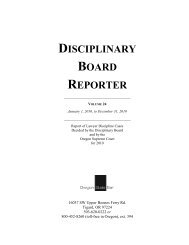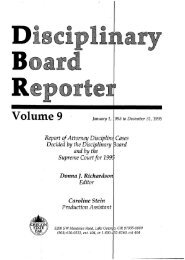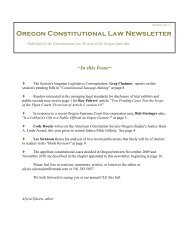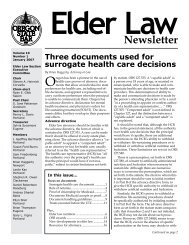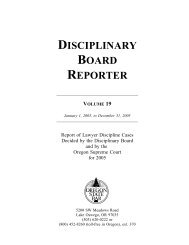Jackson v. Franklin Sports Gazette, Inc. Grading ... - Oregon State Bar
Jackson v. Franklin Sports Gazette, Inc. Grading ... - Oregon State Bar
Jackson v. Franklin Sports Gazette, Inc. Grading ... - Oregon State Bar
You also want an ePaper? Increase the reach of your titles
YUMPU automatically turns print PDFs into web optimized ePapers that Google loves.
Multistate Performance Test<br />
<strong>Jackson</strong> v. <strong>Franklin</strong> <strong>Sports</strong> <strong>Gazette</strong>, <strong>Inc</strong>.<br />
<br />
<br />
These elements appear to be undisputed: <strong>Jackson</strong> will be<br />
able to show that the <strong>Gazette</strong> knowingly used the Photo,<br />
for a commercial purpose (the ad), and that he did not<br />
consent to its use, nor did he receive any fee.<br />
Better answers will note that Holt and Brant predate the<br />
enactment of § 62, but that those cases are still good law<br />
because the definition of identifiability used is in accord<br />
with the statutory standard. See Leg. History.<br />
<strong>Grading</strong> Guidelines<br />
There is no question that <strong>Jackson</strong><br />
did not consent to the use of his<br />
persona, and that he will be able<br />
to show injury—he earns<br />
millions from licensing his name<br />
and likeness.<br />
(10% suggested weight)<br />
<br />
Thus, the dispositive issue is whether the <strong>Gazette</strong> made use<br />
of <strong>Jackson</strong>’s persona. Doing so requires that <strong>Jackson</strong> be<br />
“readily identifiable” in the Photo. See § 62. That is, could<br />
the public “reasonably determine” that the Photo depicts<br />
<strong>Jackson</strong>, and not another Blue Sox player? Id.<br />
(30% suggested weight)<br />
<br />
The award-winning Photo shows <strong>Jackson</strong>, in his team<br />
uniform, sliding into home plate. His back is to the<br />
camera and his face is not visible in the Photo. Only the<br />
second “0” of <strong>Jackson</strong>’s team number, “00”, is visible.<br />
<br />
<br />
Neither the statute nor <strong>Franklin</strong> case law requires that to be<br />
“readily identifiable,” an individual’s face must be visible.<br />
In Holt v. JuicyCo, <strong>Inc</strong>., and Janig, <strong>Inc</strong>., the athlete was<br />
identifiable by virtue of his unique and distinctive racing<br />
suit; thus the advertising company violated Holt’s right of<br />
publicity even though it had digitally removed his race<br />
number from the video.<br />
<br />
Holt is distinguishable: <strong>Jackson</strong> is wearing the team<br />
uniform, and, while his number would usually identify<br />
him, only the last “0” is visible.<br />
<br />
<br />
<br />
Other players, both when the Photo was taken five years<br />
ago and now, have worn numbers ending in “0,” and at<br />
both times, there were Caucasian players other than<br />
<strong>Jackson</strong> wearing team numbers ending in “0.”<br />
Thus, applicants should conclude that, as in Brant, where<br />
only the plaintiff’s legs and a portion of her swimsuit were<br />
visible, <strong>Jackson</strong> is not “readily identifiable.”<br />
The fact that the <strong>Gazette</strong> knew the Photo was of <strong>Jackson</strong><br />
does not speak to the issue of whether <strong>Jackson</strong> is<br />
identifiable.<br />
13<br />
Not for Public Distribution







